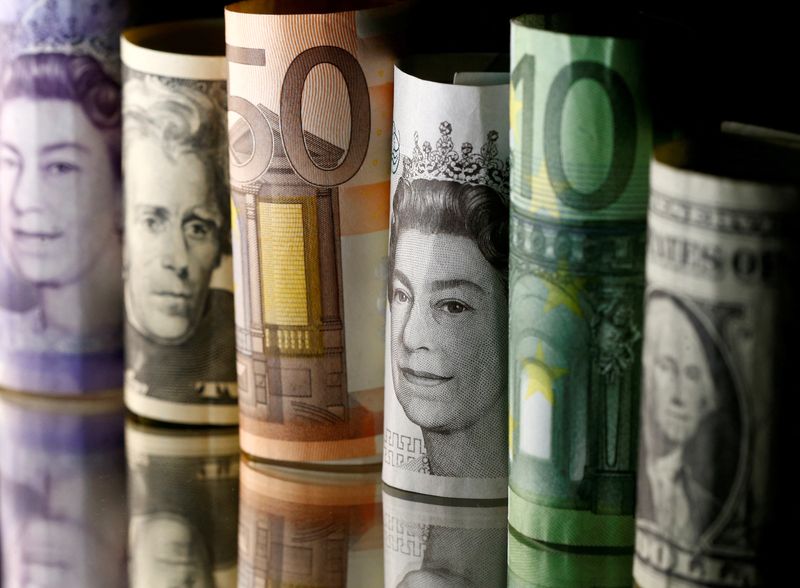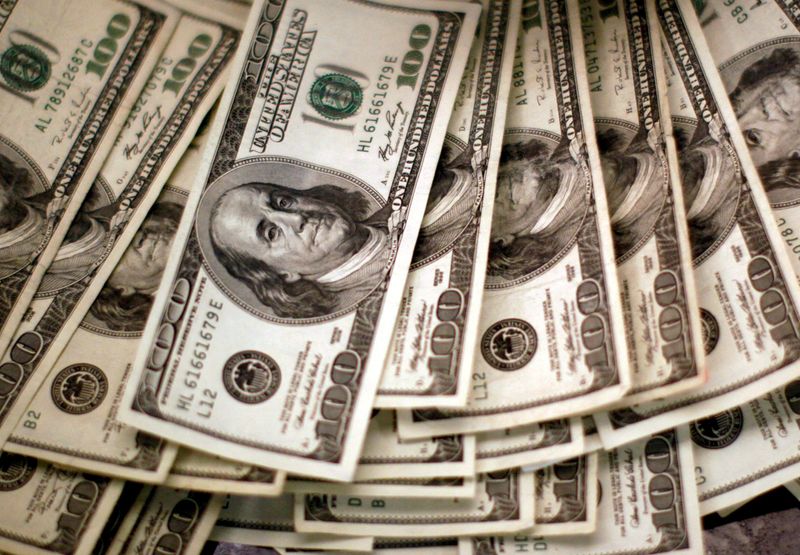By Ankur Banerjee and Alun John
SINGAPORE/LONDON (Reuters) - The euro and pound rose on Friday and were heading for their biggest weekly gain in four months, as the U.S.-led rally in global bonds sent yields down, and with them the dollar, bringing relief even to the embattled Japanese yen.
Always-crucial U.S. non-farm payrolls data due at 1230 GMT - the most important data point in a packed week - could change that narrative completely however.
The euro was last up 0.27% at $1.06515, and thanks to gains earlier in the week was heading for a weekly gain of 0.8%, which would be its most since July.
Sterling likewise was up 0.2% on the day at $1.2228, and set for a 0.86% weekly gain, also its most since July.
The decline in the dollar after a very strong recent rally - the dollar index is on course to drop 0.6% for the week, just its third week of losses in the last 16 - mirrors a decline in U.S. yields. The benchmark U.S. 10-year treasury yield is heading for a near 20 basis point weekly fall, its most in a week since July.
This week's fall was sparked by a combination of the U.S. Treasury Department announcing smaller-than-expected increases in longer-dated Treasury supply, and Federal Reserve Chair Jerome Powell seeming more confident suggesting the Fed is done hiking interest rates at his press conference after their Wednesday meeting. [US/] Markets are now pricing in less than a 20% chance of a rate increase in December compared with 39% earlier in the week, the CME FedWatch tool showed, even though the Fed officially left the door open to a further increase in borrowing costs in a nod to the economy's resilience.
But the week's main event, U.S. payrolls, is still to come.
"We've had plenty of events this week, the BOJ, the Fed, the Treasury refunding, the BOE, but what's most important is payrolls," said Yusuke Miyairi, an FX strategist at Nomura.
"If there's a big miss, say 100,000 compared to consensus, I think that's the time that people could really start selling dollars, I don't think we're at that inflection point yet, but people's sentiment is starting to go in that direction," he said.
Meanwhile if it comes strong then people are back to buying dollars, he said.
Analysts think U.S. non-farm payrolls likely increased by 180,000 jobs in October, slowing from 336,000 in September, partly due to strikes by the United Auto Workers (UAW) union against Detroit's "Big Three" car makers, which depressed manufacturing payrolls.
The Bank of England joined other major central banks in holding rates steady on Thursday and while it stressed that it did not expect to start cutting them any time soon, that added a further nudge to the rally in bonds.
The yen strengthened on Friday with the dollar down 0.2% to 150.19 yen, after a whirlwind week, in which the Japanese currency touched a one-year low against the dollar and 15-year low against the euro after the Bank of Japan tweaked its yield curve control policy on Tuesday, but not by as much as markets had expected.
Kazuo Ueda, the central bank's governor, will continue to dismantle its ultra-loose monetary policy and look to exit the decade-long accommodative regime next year, Reuters reported on Thursday, according to six sources familiar with the central bank's thinking.
The Australian dollar was up a touch at $0.6444, just shy of the over one-month high of $0.6456 it reached on Thursday.

Both the Aussie and the New Zealand dollars are up 1.7% for the week, their best weekly performance since again mid-July.
The Swiss franc, however, which was a beneficiary of a flight-to-safety bid in October, has weakened this week. The dollar is heading for a weekly gain of 0.25% on the franc and was last at 0.9041 francs.
